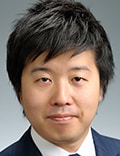Bronchiolitis is the leading cause of infant hospitalizations in the United States and Europe, and almost one third of these patients go on to develop asthma later in childhood.
But a multinational team of researchers has presented evidence that could avoid that outcome. They identified four different subtypes of bronchiolitis along with a decision tree that can determine which infants are most likely to develop asthma as they get older.

Dr Michimasa Fujiogi
Reporting in the journal eClinical Medicine, Michimasa Fujiogi, MD, of Massachusetts General Hospital and Harvard University, Boston, and colleagues analyzed three multicenter prospective cohort studies that included a combined 3081 infants hospitalized with severe bronchiolitis.
“This study added a base for the early identification of high-risk patients during early infancy,” Fujiogi said in an interview. “Using the prediction rule of this study, it is possible to identify groups at high risk of asthma during a critical period of airway development — early infancy.”
The researchers identified four clinically distinct and reproducible profiles of infants hospitalized for bronchiolitis:
-
A: characterized by a history of breathing problems and eczema, rhinovirus infection, and low prevalence of respiratory syncytial virus (RSV) infection.
-
B: characterized by the classic symptoms of wheezing and cough at presentation, a low prevalence of previous breathing problems and rhinovirus infection, and a high likelihood of RSV infection.
-
C: the most severe group, characterized by inadequate oral intake, severe retraction at presentation, and longer hospital stays.
-
D: the least ill group, with little history of breathing problems, but inadequate oral intake with no or mild retraction.
Infants with profile A had the highest risk for developing asthma — more than 250% greater than with typical bronchiolitis. They were also older and were more likely to have parents who had asthma — and none had solo-RSV infection. In the overall analysis, the risk for developing asthma by age 6 or 7 was 23%.
The researchers stated that the decision tree accurately predicts the high-risk profile with high degrees of sensitivity and specificity. The decision tree used four predictors that together defined infants with profile A: RSV infection status, previous breathing problems, eczema, and parental asthma.
“Our data would facilitate the development of profile-specific prevention strategies for asthma — eg, modification of host response, prophylaxis for severe viral infection — by identifying asthma risk groups early in infancy,” Fujiogi said.
The study received funding from the National Institutes of Health. Fujiogi and co-authors have disclosed no relevant financial relationships.
eClinical Med. Published online January 3, 2022. Full text
For more news, follow Medscape on Facebook, Twitter, Instagram, YouTube, and LinkedIn
Source: Read Full Article
